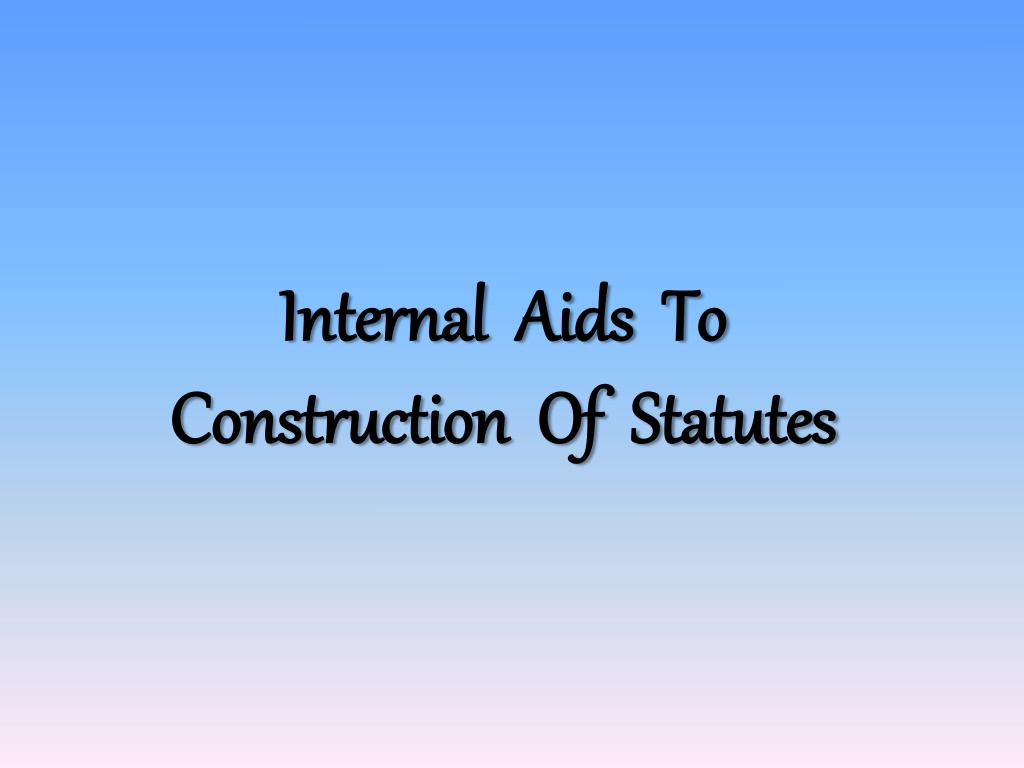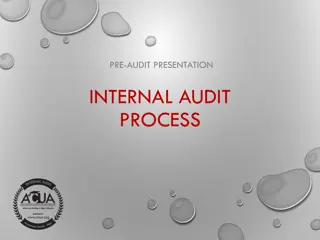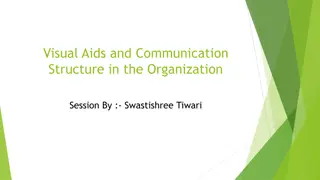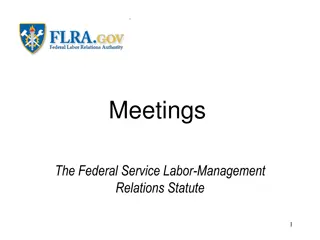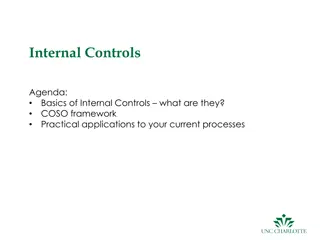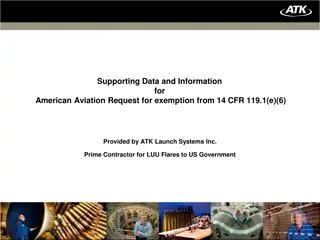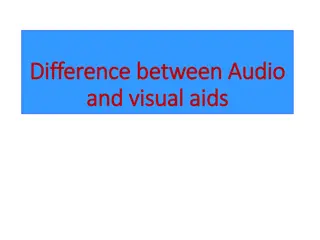Understanding Internal Aids to Statute Construction
Internal aids such as long titles, preambles, and headings play a crucial role in interpreting laws by providing insights into the scope and purpose of statutes. They guide in understanding the intention behind legislation, helping to resolve ambiguities and ensure effective application of the law.
Download Presentation

Please find below an Image/Link to download the presentation.
The content on the website is provided AS IS for your information and personal use only. It may not be sold, licensed, or shared on other websites without obtaining consent from the author. Download presentation by click this link. If you encounter any issues during the download, it is possible that the publisher has removed the file from their server.
E N D
Presentation Transcript
Internal Aids To Internal Aids To Construction Of Statutes Construction Of Statutes
INTRODUCTION Law edict of Legislature Shall be read in full using the words given No law is perfect. Hence leaves scope for interpretation. Judiciary can only interpret the law and not rewrite it by adding/subtracting words for the law Several principles carved out for facilitating interpretation.
Internal Aids for Understanding Laws Significance of : Long Title for Act Part of Act and is admissible as aid for construction. Long title along with or without Preamble a good guide regarding the object, scope or purpose of law.
Continued Examples of Long Title: Title of Madras General Sales Tact Act, 1939 utilized to spell out that the object of the Act was to impose taxes on Sales which take place within the province. Title of Industrial Disputes Act, 1947 spells out that it is An Act to make provision for the investigation and settlement disputes, and for certain other purposes. Title not an enacting provision but useful for providing clear meaning in case of ambiguity. of industrial
PREAMBLE FOR THE ACT Part of the Act and an admissible aid for construction. Expresses the scope, object and purpose of the Act more elaborately than the long title. May rewrite the ground and the cause for making the statute. Key to open the minds of the makers of the Act and the mischief they intend to address. Preamble can also be specific to provision usually known as Notes on Clauses.
CONTINUED The Preamble of the Indian Constitution reads as follows: We the People of India, having solemnly resolve to constitute India into a Sovereign, Socialist, Secular, Democratic and Republic and to secure to all its citizens: Justice, social, economic and political; Liberty of thought , expression, belief, faith and worship; Equality of status and of opportunity; and to promote among them all Fraternity assuring the dignity of the individual and the unity and integrity of the Nation; In our Constituent Assembly this twenty-sixth day of November, 1949, do hereby adopt, enact and give to ourselves this Constitution.
Headings Titles can be referred to in construing the Act of the Legislature. Headings key to the interpretation of the clauses and the provisions unless words used therein are inconsistent with the interpretation. Use of the Heading helps in case the enacting words are ambiguous. Headings cannot be used if the words in the provision are clear and unambiguous. They are an aid in construing the provision.
Marginal Notes Notes added to a Section cannot be used for construing the Section General View. Marginal Notes cannot control the Section if the language is clear. Marginal Notes are only for guidance.
Punctuation No punctuation marks were used in England before 1850 in manuscript copy of any Act which received legal assent. Punctuations cannot be used to construe the Act. Modern Acts carefully punctuation may be considered as a minor aid for construction. Comma for example represents continuum and embraces all attributes covered under it. punctuated. Hence
Illustration Appended to a Section forms part of the Statute. Does not form part of the Section but is of relevance and adds value in construction of the text of the Section. Illustrations cannot modify the language of Section and hence do not curtail or expand the ambit of the Section. Companies Act, 1956) (Eg: Section 4 of
Definitions Difference between Inclusive and Exclusive definition. Means prima facie restrictive and exhaustive. Includes Inclusive and intended to be extensive. (Eg: Section 2(13) of Companies Act, 2013 books of account includes records maintained .)
Definitions Continued. Where the definition is in the form of means and includes definition is considered to be exhaustive. (Eg: Section 2(70) of the Companies Act, 2013 Prospectus means any document described or issued as a prospectus and includes a red herring prospectus referred prospectus referred to in Section 31 or any notice, circular, advertisement or other document inviting offers from the public for subscription or purchase of any securities of a body corporate.) If a word is defined apply to and include definition is extensive. Definition can also be deemed to include refers to an inclusive and exclusive definition. (Eg: Section 9 of the Income Tax Act, 1961) to in Section 32 or shelf
Definitions Continued. Ambiguous definition Normally definition is intended to be precise. If it is ambiguous, it requires interpretation. Definition never to be read in isolation but must be read in the context of the phrase which it defines. Amplitude of Extensive Definition not to be restricted unless the restriction is necessary to prevent an erroneous construction. (For Eg: amplitude curtailed by amendment to Rule 4 of Board Meeting Rules, 2014.
Proviso Normal function to except something out of the Enactment or to qualify something enacted therein but the proviso will be within the provisions of the Enactment. Proviso normally added to an Enactment to qualify or create an exception to what is in the Enactment.
Explanation Appended to a Section to explain the meaning of words contained in Section becomes part and parcel of the Enactment. Where explanation is so worded purposes of this Section prima facie intends that it will apply to all clauses in the Section. When added later to an existing Section, an Explanation can have retrospective application. For the
Schedules Appended to Acts forms part of the Statute. To avoid encumbering the Sections in the Statutes with matters of excessive details. Division into Schedule though matter of convenience, it may contain substantive enactment also. In case of conflict between Act and Schedule, the Act prevails.
